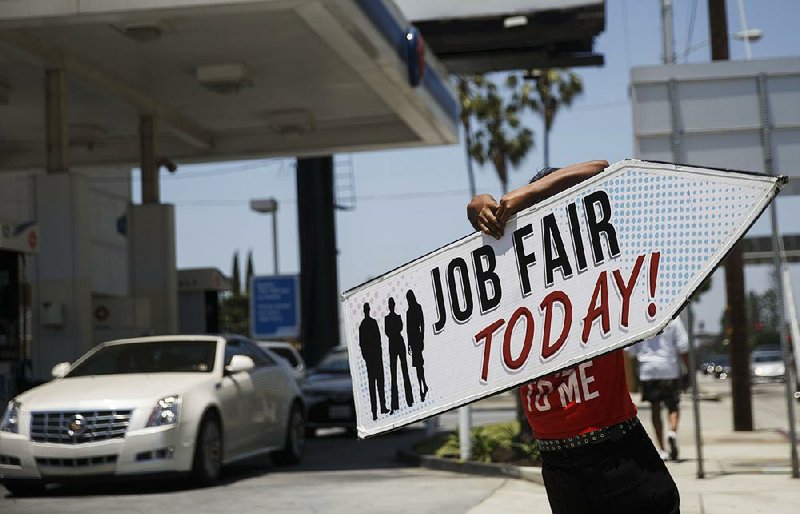WASHINGTON -- Fewer people sought U.S. unemployment benefits last week, the Labor Department said Thursday, evidence that employers are holding on to their staffs .
Weekly applications dropped 18,000 to a seasonally adjusted 259,000, the lowest in two months. The less volatile four-week average declined to 267,000.
"This data continue to point to a labor market that continues to be pretty solid," said Ward McCarthy, chief financial economist at Jefferies LLC in New York. "The weekly labor market data right now isn't really fitting with the monthly labor market data, but I expect that over the next few months we'll see a return to trend" in payrolls.
Applications are a proxy for layoffs and have remained below 300,000 for 68 straight weeks, the longest such streak since 1973.
A total of 2.14 million Americans are receiving benefits, 4.6 percent lower than a year earlier.
The data suggest that a recent slowdown in hiring will be temporary. Employers added just 38,000 jobs last month and an average of only 116,000 in the past three months. That's half of last year's pace.
The cutback came after economic growth slowed in the first quarter to an annual rate of 0.8 percent.
Still, the low level of applications for unemployment benefits adds to recent evidence that hiring could pick back up in the coming months, some economists say.
And recent research by economists at JPMorgan Chase has found that fewer applications are consistent with steady hiring over time. Not as many people seek benefits when it is easier to find work.
There are signs the economy has improved in the April-June quarter. Home sales rose to a nine-year high last month, according to the National Association of Realtors, and homebuilding has picked up. Americans have also stepped up their spending at retail stores and restaurants in recent months.
Still, the economy wasn't strong enough to prompt the Federal Reserve to lift the short-term rate it controls during its two-day meeting last week.
Fed Chairman Janet Yellen said in congressional testimony this week that Fed officials believe the weakness in hiring is temporary. She has previously pointed to the low number of people seeking benefits as evidence that job gains could rebound.
Americans pulled back from buying new homes in May, reversing strong gains made in April as sales fell sharply in the Northeast and West.
New-home sales declined 6 percent last month to a seasonally adjusted rate of 551,000 from a downwardly revised 586,000 in April, the Commerce Department said Thursday. Still, sales are 6.4 percent higher year-to-date. Job growth and low mortgage rates have helped drive the increase, though the data can be volatile from month to month and across regions.
New-home sales have rebounded from the depths of the housing bust, though builders have focused on the upper echelon of buyers. The shift to the luxury market means that fewer new homes are being built, but the new homes are typically selling for higher prices.
May's median sales price was up 1 percent from a year ago to $290,400. That figure would likely have been higher if not for the steep monthly declines in the pricier Northeast and Western regions.
Northeast sales slumped 33 percent from April to May while the West suffered a 15.6 percent decline. Sales barely slipped in the South but improved 12.9 percent in the traditionally affordable Midwest.
Information for this article was contributed by Christopher S. Rugaber and Josh Boak of The Associated Press and by Michelle Jamrikso of Bloomberg News.
Business on 06/24/2016
